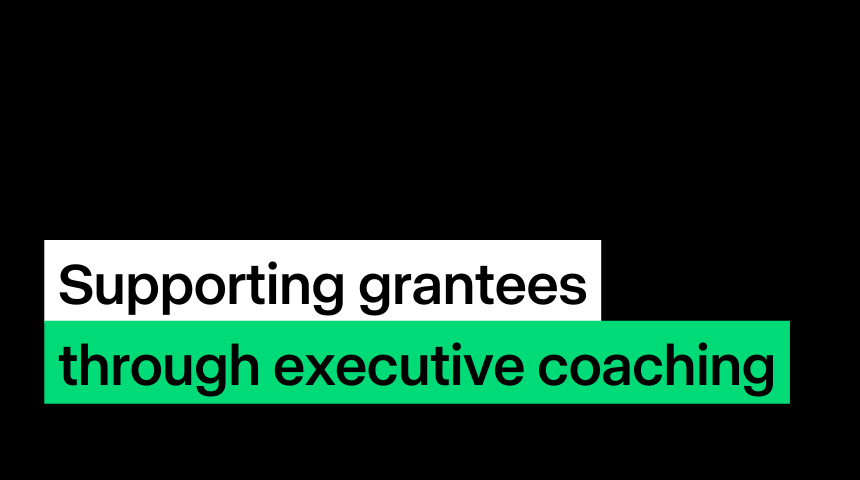By Lorna Kanyuga, Atlas Corps Fellow and Laura Bacon, Luminate
In 2021 and early 2022, Luminate provided coaching stipends to 78 of our partner organisations, with more than 200 leaders receiving executive coaching.
Our Vice President, People, Culture & Global Support, Claire Davis, provided advisory support to partners who wanted to learn more about types of coaching, how to select a coach, and how to get the most out of it.
You can view the deck that Claire shared with our partners here.
This article is a summary of what we have learned from the feedback our partners provided through post-coaching stipend reports.¹ Note: In this article, the term “coaching” refers specifically to Executive Coaching.
1. Coaching works
Leadership coaching is neither as sought after nor as accessible in the non-profit world as it is in the business world. That said, under the right conditions, it is an important tool for non-profit leaders (and their teams) to better navigate the challenges that come with leading and working in a non-profit industry.
We asked our partners about the impact of our coaching stipend. Overall, 69% of partners surveyed felt that coaching led to considerable improvements for their organisations, while 31% felt that their organisations had moderate improvements. No organisations selected the third option, ‘No improvement’.
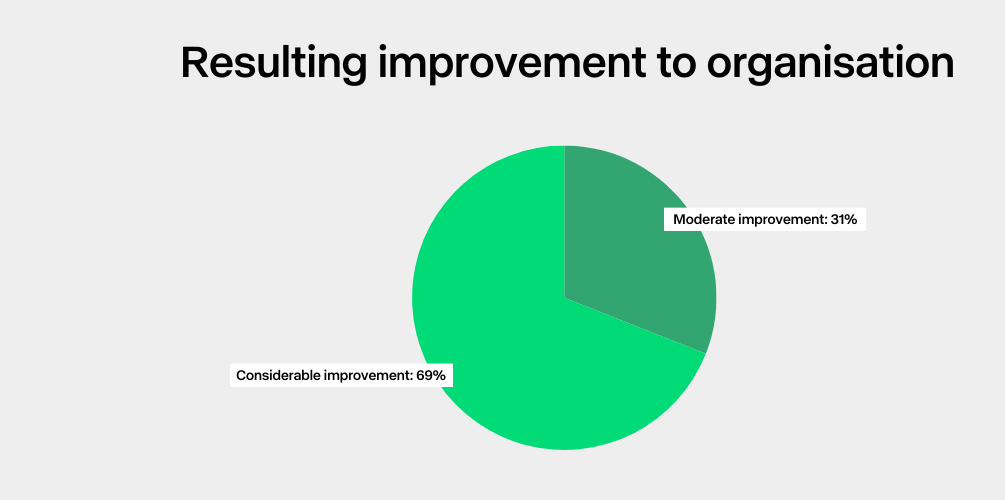
The reported improvements were seen across a wide range of areas, such as:
- Developing leadership styles – Learning about different leadership styles and which one fits their context
- Reflection and self-awareness – Reflecting on past and current situations, discussing strengths and weaknesses
- Managing wellbeing – How to take care of themselves considering the complexity of leadership, managing triggers, tools for wellbeing (e.g., deep breathing techniques)
- Managing teams – Working with direct reports, building team culture, managing other managers, working with different cultures, giving feedback, trauma-informed performance management
- Problem solving and risk management – Managing change, navigating difficult situations
- Understanding the leadership role – Various responsibilities (thought leadership, management, strategy execution, vision setting, team building, fundraising) that non-profit leaders hold
- Strategy – Prioritization, goal setting, decision making, developing strategy according to context
- Productivity – Time management, accountability, execution
In their feedback, partners shared the benefits they saw from coaching:
- “As a skill and a practice, leadership requires space to reflect and target. In our experience, coaching was a powerful mechanism to accomplish this, and to ensure that we are able to attend to these critical needs amidst the pull of day-to-day work. We have also started to adopt the coaching model to the way we do performance management, primarily through one-on-one check-ins.”
One partner who was not as familiar with the concept of coaching saw excellent results for their organisation:
- “Leadership coaching isn’t something that is generally offered in the not-for-profit world in this modality, therefore it’s a new concept that took some time to ‘socialise’ as a good idea. However, the transformation of some of the team was drastic in terms of their confidence and ability to manage time to be more productive whilst enjoying their work without burning out. Based on the success of this coaching, we are considering integrating and offering coaching more broadly to our staff and partners worldwide."
- “[We] will continue facilitating the Senior Management Team members to have 2-3 coaching sessions annually to aid their leadership growth.”
One partner mentioned that having the stipend allowed them to “take the risk” on coaching, which implies that protected stipends allow partners to spend money on things that they would otherwise have not tried.
Recommendation for funders:
— Funders can support their grantees by providing stipends specifically for coaching.
— Alternatively, funders could encourage partners to either budget for coaching in their core grant or to ask for additional funding to ensure that grantees have access to coaching programs.
— Provide initial consultation on what coaching is and how it could benefit their organisations. This will ensure that partners can use it effectively.
2. Picking the right coach is key
Choosing the right coach is essential for a successful experience. By and large, most organisations felt that coach selection was the biggest challenge that they faced. Some of the aspects they considered included the languages spoken by the coach and the connection they had. Some partners had to speak with several coaches before finding the right one, which was a time-consuming process. This is what they reported back to us:
- “I would recommend interviewing at least three coaches in order to find the right one. It is important to feel comfortable with your coach, empathize with them, and trust them."
- “It was very hard to find a coach I liked. I had to ask many different people for references and (it) still wasn’t easy. It would only make sense if I could establish a connection with my business/organisation.”
Some partners engaged coaches who primarily use tools and techniques designed for for-profit organisations. Many of these partners reported that some of the support provided felt like it was through a for-profit lens. They reported a disconnect and felt that these coaches didn’t understand the unique challenges of their field and that their proposed solutions did not apply to their contexts.
- "In our particular case, we could not take advantage of the process as we would have liked because we perceived that most of the tools were designed to improve performance indicators in commercial terms, something that did not adapt very well to the operation and nature of our organization. This was because it made it difficult for us to understand how to incorporate what was learned/discussed into the mission and daily routines of the organization."
On the other hand, one organisation reported that having a coach who had worked with many corporate clients actually helped them to view things differently and add new ideas to their work.
Recommendation for funders
— Funders could consider supporting partners with coach selection, if requested. This support can be in the form of connecting grantees to consultant databases or networks, assisting grantees with the tools that can support effective coach selection, and providing a framework for partners to evaluate whether the coaching is helpful or not (and when to end the relationship).
— Encourage non-profit leaders to align coaching selection – including tools and approaches – with their needs.
3. Select the right coaching model
Luminate partners used various coaching models. Some chose individual leadership coaching, others opted for a group coaching model, and others used a combination of models.
Furthermore, as this guidance document explains, it is important to differentiate executive coaching, management coaching, and life coaching. Finally, we noticed that people sometimes conflate the need for a coach with a need for mentors, advisors, and therapists; although the topics discussed sometimes overlap, the objectives of the sessions and the qualifications of the professionals involved differ.
One of our objectives was to involve mid-level managers and emerging leaders in the coaching process to strengthen the organisations’ leadership pipeline, and we structured the stipends to cover this.
What we hadn’t expected, but were pleasantly surprised by, was some partners chose to use their coaching funds to benefit their entire staff through group coaching. This was done through a mixed model of 1:1 coaching for the leadership and group coaching for staff.
Staff members were coached in areas such as career development and individual growth. For some organisations, the coach was a trusted channel for team members to have confidential conversations.
Some partners who only had coaching for the leadership team felt that they would like to invest in coaching for their entire staff in the future, while others wanted to adopt the coaching techniques they had learned.
As one partner shared:
- “I think coaching should not just be for managers. I have found the coaching so helpful for day-to-day work that I am incorporating it into other aspects of my life and have been adapting it for my team's task management. I think it would be great if Luminate could fund coaching for entire teams.”
Recommendation for funders
— Consider grants that can support group coaching for either the entire leadership team or staff (where possible).
— Highlight to partners the potential advantages of group coaching over individual coaching, emphasising that the decision is based on their context.
4. Coaches must be flexible
Understandably, leadership teams of civil society organisations have a lot on their plate. It was helpful to have coaches who were flexible on how they delivered support and did not have strict timelines. These coaches allowed leaders to make time for coaching and address the areas discussed on a schedule that worked for them.
- “The timeline flexibility is also important as it really took a lot of time for us to ensure our availability and on top of that do the work before each coaching session. The one-year or so timeframe, and a coach who understands the challenges and won’t insist on completing the contract within a specified time frame is important for us activists; and to allow coaching for a full team was critical for us as a small organisation.”
Recommendation for funders
— Funders should encourage organisations to look for coaches who are willing to be flexible across timelines and delivery methods.
Overall, executive coaching seems to be an effective tool to support leaders and their teams. However, the type of coach, the specific areas to work on, and the coaching model need to be considered before investing in coaching.
We’re interested in hearing your thoughts, too. What coaching practices have worked in your non-profit or foundation? Are there coaches you’d recommend we add to our consultant database?
Let us know by writing to [email protected].
¹ The report asked 4 main questions: The length of the coaching, the impact of the coaching on the organisation, what they learned during the process, and what Luminate should learn about supporting partners with coaching. We asked 26 partners to submit reports, and as of this writing, 19 have submitted reports.
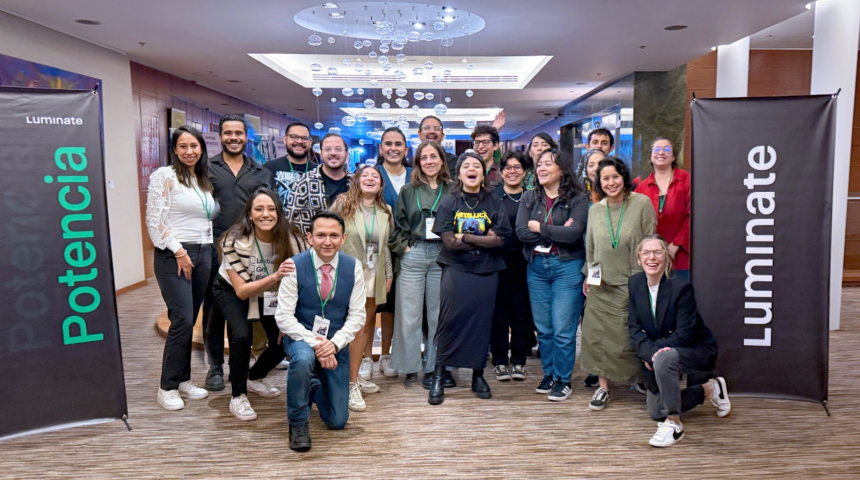
Potencia: The power of beyond-the-grant support
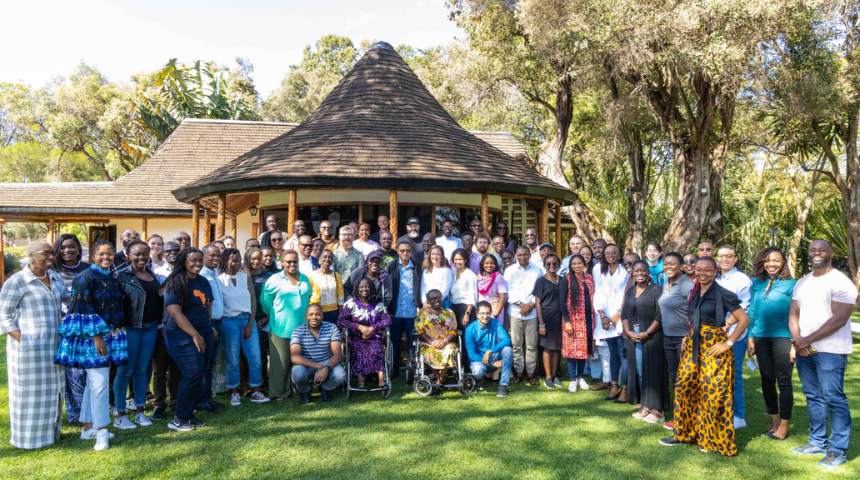
Navigating Technology's Role in African Democracy: Reflections from Luminate's...
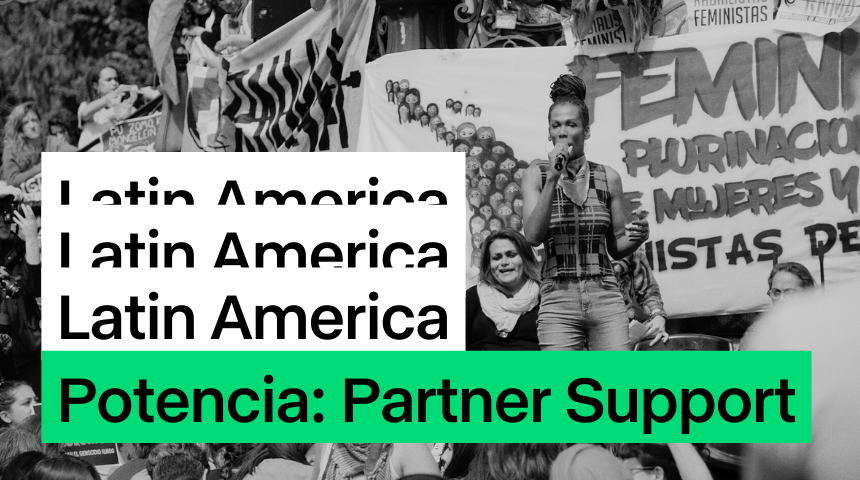
Potencia: Insights from three years of Partner Support in Latin America
